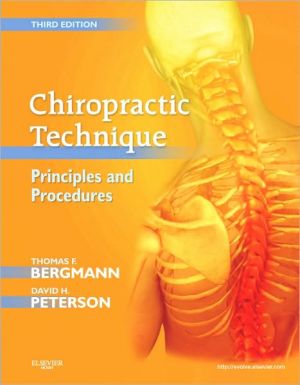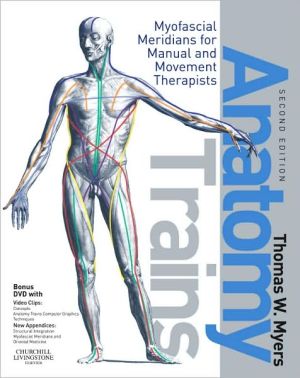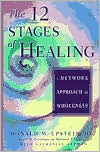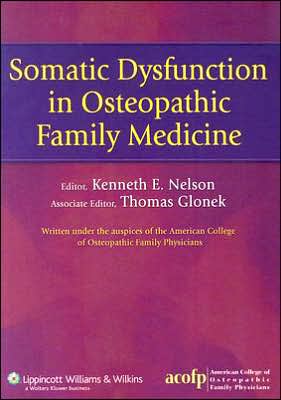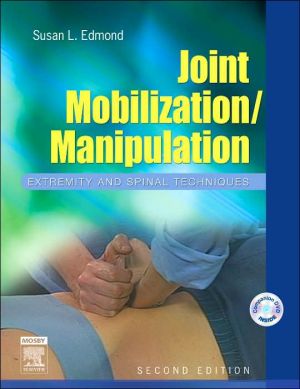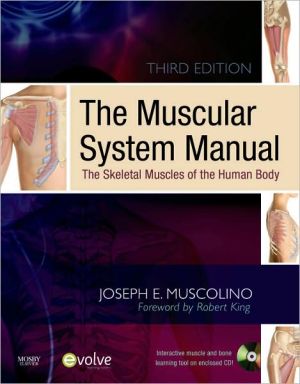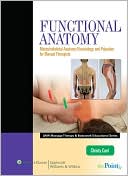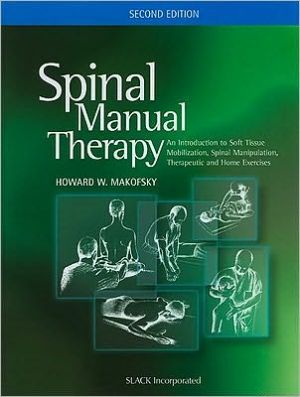Chiropractic Technique: Principles and Procedures
No other book offers a complete guide to chiropractic adjustive techniques! Chiropractic Technique, 3rd Edition makes it easy to understand essential procedures and provides a rationale for their use. Written by Thomas F. Bergmann, DC, FICC, and David H. Peterson, DC, and backed by the latest research studies, this bestseller describes the basic principles needed to evaluate, select, and apply specific adjustive procedures. With a review of chiropractic history, detailed descriptions of joint...
Search in google:
This practical guide and reference text offers a broad approach to adjusting the spine and the extremities, full diagnostic procedures for decision making, and an in-depth discussion on the principles that underlie chiropractic technique. A. Wood Weller This book describes the historical and scientific basis and ""hands-on"" specifics of chiropractic technique for the spine and extremities. It provides in-depth investigation of assessment and treatment for manipulable ""lesions."" This book fills a void in the literature of manipulative technique, and more specifically in the chiropractic literature base relating to technique, providing a rational basis for choice and application of specific adjustive procedures for spinal and extremity articulations. This book is an appropriate textbook for students and practitioners. Students will benefit from the organization of how to find, assess, and specifically treat articular lesions. Practitioners will find the biomechanical and diagnostic level of investigation developed in the book to be of value in modifying technique for varied situations that present themselves in day-to-day practice. This book contains very high quality illustrations and drawings as well as photographs depicting each adjustive technique. The combination of photograph and drawing for each technique provides a very good understanding of contact points and direction of impulse for correction of the joint being discussed. The references used in the text represent the state of the literature as it relates to manipulative therapy and current concepts in biomechanics. The book is very easy to use. The high quality of illustrations, general layout, and typeface chosen make it comfortable to both leaf through and read in depth. This book is long overdue in the chiropractic profession. It is extremely relevant and very useful to anyone engaged in the art and science of manipulative therapy. It provides a basis for manipulativetherapy and specific technique application not currently available. At the professional school level, its usage will expand current curricula via the depth and breadth covered in a single text. Practitioners will also benefit from the breadth of adjustive techniques it contains. It is a text that comes highly recommended.
1General Overview of the Chiropractic Profession12Joint Anatomy and Basic Biomechanics11Fundamental Concepts, Principles, and Terms11Joint Function20Mechanical Forces Acting on Connective Tissue24Properties of Connective Tissue26Models of Spine Functions333Joint Assessment Principles and Procedures39The Manipulable Lesion40Subluxation40Vertebral Subluxation Complex41Spinal Listings50Clinical Evaluation of Subluxation/Dysfunction51Clinical Documentation844Principles of Adjustive Technique97Classification and Definition of Manual Therapies98Joint Manipulative Procedures98Soft Tissue Manipulative Procedures102Indications for Adjustive Therapy103Joint Subluxation/Dysfunction Syndrome103Contraindications to and Complications of Adjustive Therapy106Effects of Adjustive Therapy122Application of Adjustive Therapy1395The Spine: Anatomy, Biomechanics, Assessment, and Adjustive Techniques175Structure and Function of the Spine176Evaluation of Spinal Joint Function178Isolation of Joint Subluxation/Dysfunction183Cervical Spine184Thoracic Spine228Lumbar Spine281Pelvic Joints3156Extraspinal Techniques341Role of the Peripheral Joints342Temporomandibular Joint342Shoulder354Elbow378Wrist and Hand389Hip402Knee415Ankle and Foot4327Nonthrust Procedures: Mobilization, Traction, and Soft Tissue Techniques449Joint Mobilization450Manual Traction-Distraction453McKenzie Method456Cranial Manipulation460Soft Tissue Manipulation463App. 1Named Chiropractic Techniques493App. 2Forms of Chiropractic Technique495App. 3Chiropractic Glossary of Commonly Used Terms503App. 4Functional Capacity Questionnaires511Index515
\ From the Publisher"For students of chiropractic and manual therapy, Bergmann (chiropractic methods, Northwestern Health Sciences U.) and Peterson (chiropractic sciences, Western States Chiropractic College) outline the basic principles needed to evaluate, select, and apply specific procedures, with an emphasis on thrust techniques. They cover chiropractic history, anatomy and biomechanical principles, joint examination, manipulative mechanics, the application of mobilization and traction, and adjustive techniques for the spine, pelvis, and extremities. This edition has updated and expanded content on joint assessment, joint subluxation/dysfunction, adjustive mechanics, and sacroiliac articulation, and updated and modified procedures, and it names each of the adjustive procedures following patterns used by the US National Board of Chiropractic Examiners. Access to how-to videos of about 300 procedures is provided online."\ - Book News, Inc.\ \ \ \ \ \ A. Wood WellerThis book describes the historical and scientific basis and ""hands-on"" specifics of chiropractic technique for the spine and extremities. It provides in-depth investigation of assessment and treatment for manipulable ""lesions."" This book fills a void in the literature of manipulative technique, and more specifically in the chiropractic literature base relating to technique, providing a rational basis for choice and application of specific adjustive procedures for spinal and extremity articulations. This book is an appropriate textbook for students and practitioners. Students will benefit from the organization of how to find, assess, and specifically treat articular lesions. Practitioners will find the biomechanical and diagnostic level of investigation developed in the book to be of value in modifying technique for varied situations that present themselves in day-to-day practice. This book contains very high quality illustrations and drawings as well as photographs depicting each adjustive technique. The combination of photograph and drawing for each technique provides a very good understanding of contact points and direction of impulse for correction of the joint being discussed. The references used in the text represent the state of the literature as it relates to manipulative therapy and current concepts in biomechanics. The book is very easy to use. The high quality of illustrations, general layout, and typeface chosen make it comfortable to both leaf through and read in depth. This book is long overdue in the chiropractic profession. It is extremely relevant and very useful to anyone engaged in the art and science of manipulative therapy. It provides a basis for manipulativetherapy and specific technique application not currently available. At the professional school level, its usage will expand current curricula via the depth and breadth covered in a single text. Practitioners will also benefit from the breadth of adjustive techniques it contains. It is a text that comes highly recommended.\ \ \ From The CriticsReviewer: A. Wood Weller, DC(National College of Chiropractic)\ Description: This book describes the historical and scientific basis and "hands-on" specifics of chiropractic technique for the spine and extremities. It provides in-depth investigation of assessment and treatment for manipulable "lesions."\ Purpose: This book fills a void in the literature of manipulative technique, and more specifically in the chiropractic literature base relating to technique, providing a rational basis for choice and application of specific adjustive procedures for spinal and extremity articulations.\ Audience: This book is an appropriate textbook for students and practitioners. Students will benefit from the organization of how to find, assess, and specifically treat articular lesions. Practitioners will find the biomechanical and diagnostic level of investigation developed in the book to be of value in modifying technique for varied situations that present themselves in day-to-day practice.\ Features: This book contains very high quality illustrations and drawings as well as photographs depicting each adjustive technique. The combination of photograph and drawing for each technique provides a very good understanding of contact points and direction of impulse for correction of the joint being discussed. The references used in the text represent the state of the literature as it relates to manipulative therapy and current concepts in biomechanics. The book is very easy to use. The high quality of illustrations, general layout, and typeface chosen make it comfortable to both leaf through and read in depth.\ Assessment: This book is long overdue in the chiropractic profession. It is extremely relevant and very useful to anyone engaged in the art and science of manipulative therapy. It provides a basis for manipulative therapy and specific technique application not currently available. At the professional school level, its usage will expand current curricula via the depth and breadth covered in a single text. Practitioners will also benefit from the breadth of adjustive techniques it contains. It is a text that comes highly recommended.\ \ \ \ \ 4 Stars! from Doody\ \
